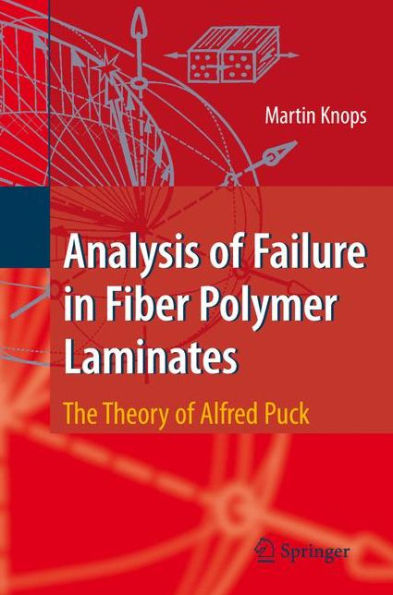Analysis of Failure in Fiber Polymer Laminates: The Theory of Alfred Puck
Fiber Reinforced Plastics (FRP) are widely used for the design of load-bearing structures. Life time prediction based on failure analysis is therefore essential for many applications in Aeronautics, Automotive and Civil Engineering. Analysis of Failure in Fiber Polymer Laminates presents Alfred Puck´s failure model, which, among several other theories, predicts fracture limits best and describes the failure phenomena in FRP most realistically – as confirmed within the “World-wide Failure Exercise”. Using Puck´s model the composite engineer can follow the gradual failure process in a laminate and deduce from the results of the analysis how to improve the laminate design. This capability distinguishes the model from other phenomenological and global models. It thus reduces the number of required component tests and iteration loops in the design process and paves the way to sorely needed software for crash-simulation of FRP-structures.
1101510576
Analysis of Failure in Fiber Polymer Laminates: The Theory of Alfred Puck
Fiber Reinforced Plastics (FRP) are widely used for the design of load-bearing structures. Life time prediction based on failure analysis is therefore essential for many applications in Aeronautics, Automotive and Civil Engineering. Analysis of Failure in Fiber Polymer Laminates presents Alfred Puck´s failure model, which, among several other theories, predicts fracture limits best and describes the failure phenomena in FRP most realistically – as confirmed within the “World-wide Failure Exercise”. Using Puck´s model the composite engineer can follow the gradual failure process in a laminate and deduce from the results of the analysis how to improve the laminate design. This capability distinguishes the model from other phenomenological and global models. It thus reduces the number of required component tests and iteration loops in the design process and paves the way to sorely needed software for crash-simulation of FRP-structures.
199.99
In Stock
5
1

Analysis of Failure in Fiber Polymer Laminates: The Theory of Alfred Puck
205
Analysis of Failure in Fiber Polymer Laminates: The Theory of Alfred Puck
205
199.99
In Stock

Product Details
| ISBN-13: | 9783540757641 |
|---|---|
| Publisher: | Springer Berlin Heidelberg |
| Publication date: | 04/25/2008 |
| Series: | Engineering Materials and Processes |
| Edition description: | 2008 |
| Pages: | 205 |
| Product dimensions: | 6.10(w) x 9.25(h) x 0.02(d) |
From the B&N Reads Blog
